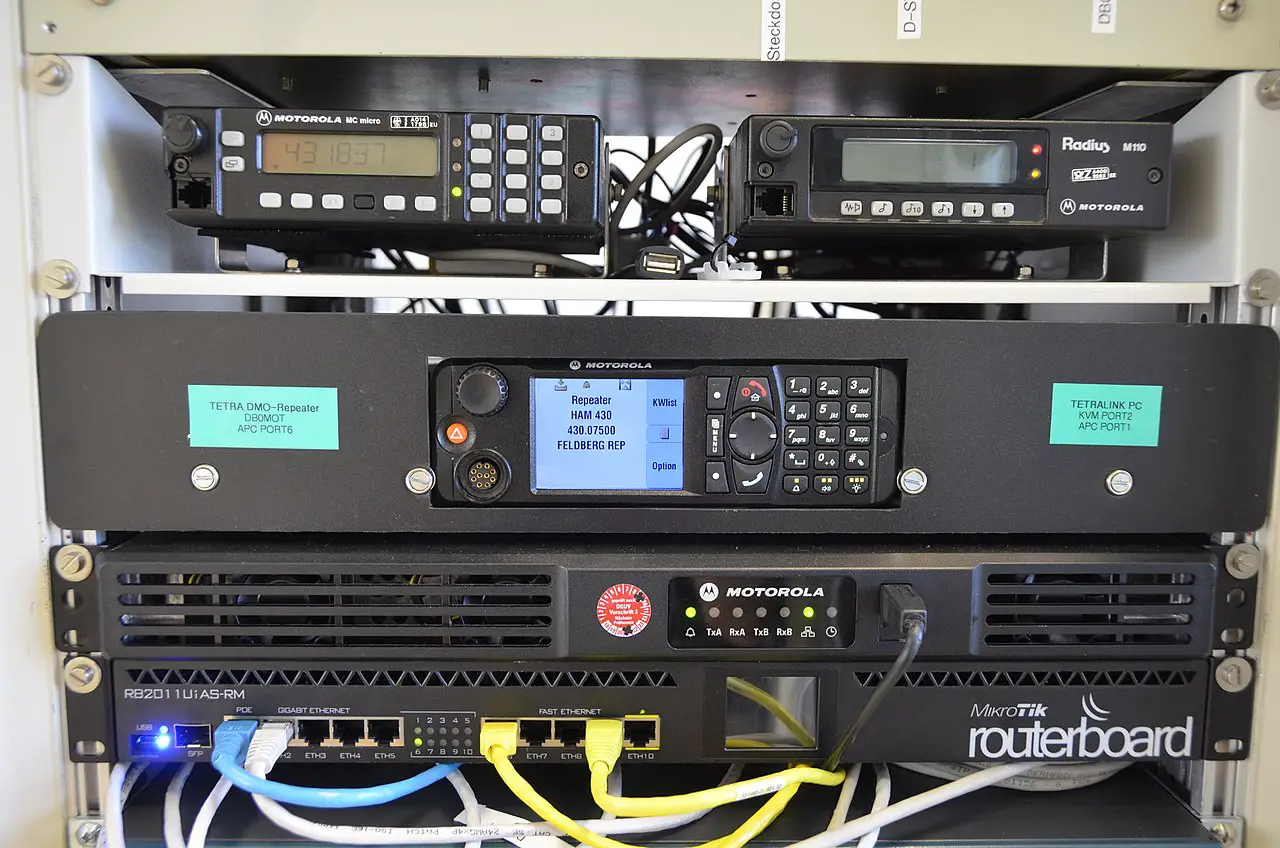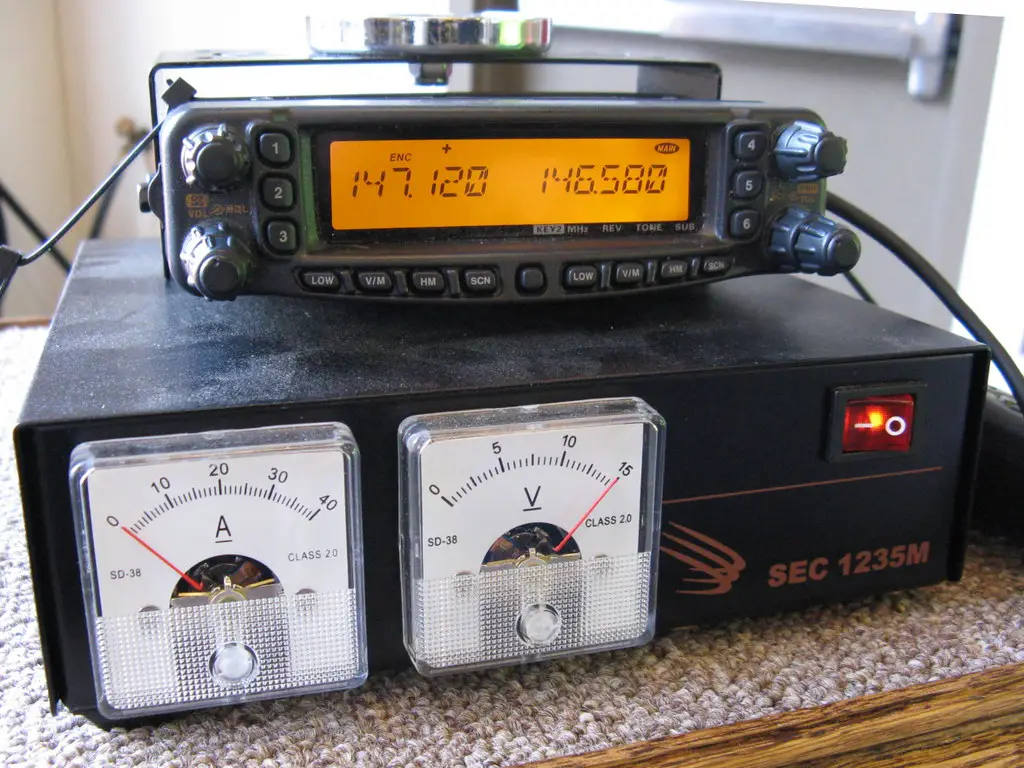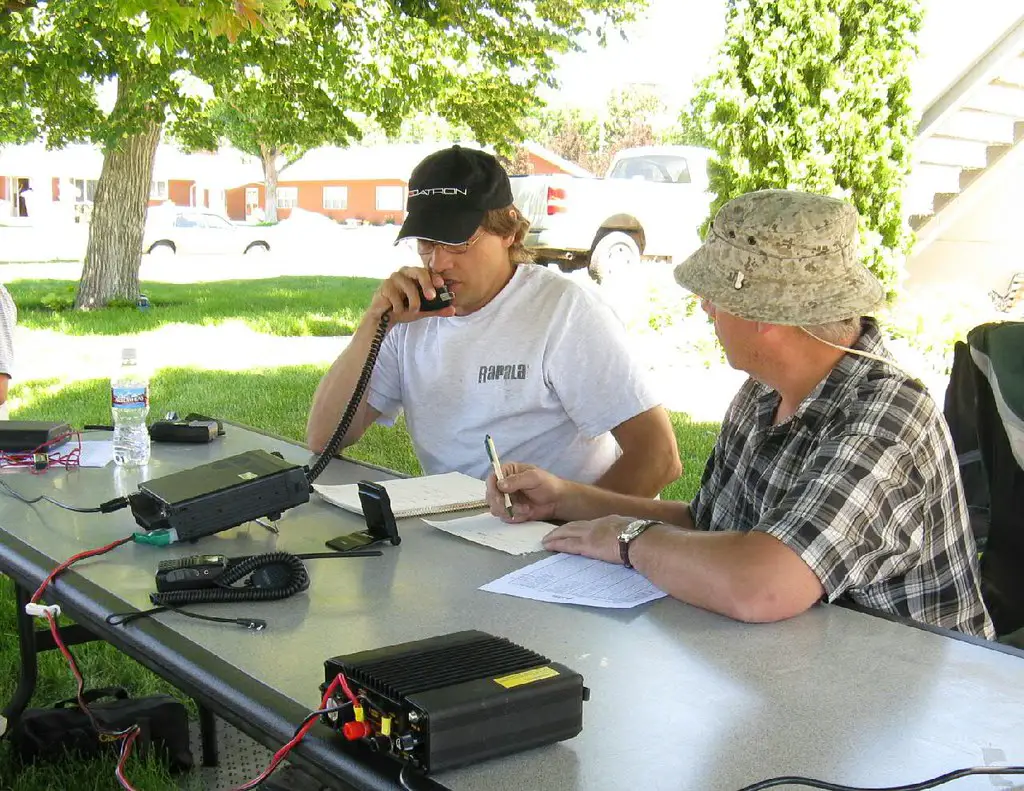- Ham radio repeaters are essential for amplifying and extending the range of communication for amateur radio operators.
- These devices take signals from one frequency and send them out on another, allowing for better coverage and reception.
- With their ability to boost signal strength and overcome obstacles like mountains or tall buildings, repeaters act as bridges connecting hobbyists worldwide.
- The critical feature of repeaters is their capability to work on various frequency bands. This allows users to communicate over long distances.
- Both receiver and transmitter units ensure messages are heard clearly and sent across networks. This makes amateur radio communication more efficient and reliable.
Typically, repeaters are located in elevated positions, like mountain tops or tall buildings. This helps optimize their signal coverage by minimizing obstructions and increasing line-of-sight opportunities. So, ham radio operators can experience extended ranges and improved quality of transmissions despite geographical barriers.
The American Radio Relay League (ARRL) reports that there are around 19,000 registered repeaters in the U.S. This shows these devices’ tremendous popularity and importance within the amateur radio community. With technology improving their capabilities, repeaters remain invaluable tools for facilitating global communication among enthusiasts worldwide.
What is a ham radio repeater?
Ham radio repeaters are must-haves for amateur radio operators. They act as relay stations, picking up signals on one frequency and retransmitting them on another. This boosts coverage and clarity, especially in places with obstacles like mountains or buildings.
These repeaters comprise a receiver, a transmitter, and an antenna system. The receiver gets incoming signals and passes them through filters. This removes any unwanted noise or interference. The transmitter amplifies the filtered signal and sends it through the antenna system.
Another feature of ham radio repeaters is tone encoding and decoding. These tones make sure only authorized users can access the repeater. To do this, radios need to be programmed correctly.
Operators should follow some tips to get the most out of ham radio repeaters. Location selection is critical. The spot should provide good coverage over a large area while avoiding obstructions. Regular maintenance and monitoring of the equipment is also essential.
Operators can also team up with other repeater owners or groups. This creates a network with even better communication capabilities, connecting users in different regions.
In conclusion, ham radio repeaters are essential for amateur radio operators. They extend the communication range and can be optimized by following practical suggestions, such as careful location selection and collaboration with other operators.
The purpose of a ham radio repeater
A ham radio repeater boosts communication between amateur radio operators. It gets a signal on one frequency and transmits it on another. This makes long-distance communication possible when line-of-sight transmission is not.
A repeater amplifies weak signals and retransmits them at higher power. So, communication is possible in areas with geographical obstacles or no direct connection. Repeaters use high antennas and powerful transmitters. This helps bridge the gap between distant stations.
Plus, repeaters have other features, like tone squelch systems. This filters out unwanted signals and cuts down interference. Also, some repeaters are linked to the internet. This connects different repeater networks around the world.
To demonstrate the importance of ham radio repeaters, here’s a story. In a remote mountain region, a group of hikers faced an emergency. They couldn’t contact emergency services because their handheld radios had limited range. So, they met a ham radio operator. He told them about a nearby repeater.
Thanks to this repeater, they contacted rescue teams hundreds of miles away. And those teams saved their lives. This shows how ham radio repeaters extend communication range and can help in crucial moments.
In short, ham radio repeaters are vital for amateur radio communications. They extend range and coverage area. This allows operators to communicate through challenging terrain. And it lets them come together in times of need.
How does a ham radio repeater work?
Ham radio repeaters are fascinating! They get signals from transmitting stations, then amplify and retransmit them. This extends the reach of the signs to places they can’t usually reach.
Repeaters have two frequencies: input and output. They pick up signals on the input freq., then amplify and broadcast them on the production. This allows for long-distance communication without degrading the signal.
They also have the unique ability to use multiple antennas. This boosts coverage by reducing blind spots and signal obstructions. It enables the repeater to cover a more extensive area with reliable communication.
Ham radio operators need to follow specific guidelines. Don’t use too much power when using the repeater – it may overload the system and cause interference, disrupting communication for other users.
Also, always provide accurate identification during transmissions. Clearly state your call sign regularly so other operators can identify and respond. This helps keep order and prevents confusion during busy times.
Setting up a ham radio repeater
- Research & plan. Find out what coverage, freq., equipment, & location you need.
- Get licenses from relevant authorities.
- Buy/build transmitters, receivers, controllers, antennas, & power supply.
- Install using cabling & connectors.
- Test & configure.
- Monitor & maintain for optimal performance.
- Personalize your repeater’s call sign, or design a unique logo.
- Be careful & pay attention to every step.
- Join local ham radio clubs or online communities for expert advice.
Did you know? Ham radio repeaters have been used during natural disasters, like hurricanes & earthquakes, to provide communication links when other methods were disrupted. ARRL reports that ham radio operators played a vital role.
Configuring and programming a ham radio repeater
- Determine the frequency:
Find the correct frequency range for your ham radio repeater. Check local laws and available channels. - Set up the hardware:
Install antennas, receivers, transmitters, controllers, and power supplies. Connect them properly. - Configure the controller:
Use a computer or control panel to get to the controller’s settings: input callsign, repeater ID, tones, duplex offset, and other details. - Program memory channels:
Input the repeater’s frequency, offset direction, tone settings, and other info into your radio device. Store them for quick use. - Test and fine-tune:
Check audio quality, signal strength, coverage area, and squelch settings, and adjust if needed. - Consider factors:
Think about the location for the best coverage and operations. - Pro Tip:
Look on industry forums or ask experienced operators for new features or programming techniques to improve your repeater’s performance.
Using a ham radio repeater

A ham radio repeater has multiple parts:
- Frequency Input/Output: The repeater uses specific frequencies—one for input and one for output. Users send signals to the input frequency, which the repeater receives.
- Receiver: This picks up incoming signals and passes them to the transmitter.
- Transmitter: It amplifies the signal and sends it at a higher power on the output frequency.
- Antenna: This broadcasts the signal to reach further than everyday communication.
- Controller: This manages functions like transmitting and receiving tones. It helps to control interference.
- Power Source: A reliable power source is essential to keep the repeater running. This includes batteries, generators, or central power lines.
Ham radio repeaters allow users to communicate over great distances. They can even be used in remote or challenging-to-reach places. Discover local clubs and organizations for guidance and support. Make the most of your communication with a ham radio repeater!
Troubleshooting common issues with ham radio repeaters
Check the connections:
- Ensure all antenna and coaxial cable connections are tightly in place.
- Look for any damage or rust on the connectors.
- Check if the power supply is working.
Adjust the settings:
- Confirm the frequency settings match the repeater.
- Adjust the squelch to filter out unwanted signals.
- Make sure the transmit and receive offsets are correct.
Conduct signal testing:
- Test your radio in simplex mode.
- Check if others can communicate via the same repeater.
- Do signal strength tests at various distances to find coverage issues.
Also, it’s essential to bear other things in mind when troubleshooting ham radio repeater problems. Ensure the antenna is correctly aligned, which can lead to poor performance. Use a different audio device or mic to rule out any tech-related problems.
To enhance troubleshooting efforts, take these steps:
- Read the user manual: Look through your radio’s manual for manufacturer-recommended troubleshooting steps. They are designed to handle common issues with their products.
- Get community help: Connect with local amateur radio clubs or online forums. Experienced operators share their solutions and knowledge to help resolve repeater-related issues. Collaborating can be a great way to get precious info and assistance.
By doing so, you will have better chances of success when dealing with repeater troubleshooting. Remember each step and adjustment is essential for ideal repeater performance.
Conclusion
Ham radio repeaters are a crucial part of amateur radio. They receive signals from one station and transmit them at higher power, connecting radio enthusiasts over vast areas. These machines use specific frequencies known as input and output. They have components such as receivers, transmitters, and controllers, which work together to amplify and relay signals.
Ham radio repeaters form part of networks. They connect multiple repeaters, creating an expansive communication infrastructure. With help from VoIP, these networks let operators communicate with people near and far.
To get the best out of repeaters, follow these best practices:
- Firstly, be mindful of etiquette – identify yourself clearly during transmissions, and don’t talk too much.
- Secondly, do regular maintenance checks. This prevents communication disruptions and ensures reliable service for everyone.
Frequently Asked Questions
Q: What is a ham radio repeater?
A ham radio repeater is used in amateur radio communication to extend the range of two-way radio signals. It receives weak signals on one frequency and retransmits them on another, allowing transmission over a greater distance.
Q: How does a ham radio repeater work?
A ham radio repeater typically consists of a receiver, transmitter, and controller. The receiver picks up incoming signals, amplifies and passes them to the transmitter. The transmitter broadcasts the signals on a different frequency, which helps overcome obstacles and increases the signal range.
Q: What are the benefits of using a ham radio repeater?
A ham radio repeater enhances communication by extending the coverage area, ensuring better signal quality, and reducing interference. It allows users to communicate over longer distances and facilitates communication in areas with obstacles like mountains, buildings, or dense vegetation.
Q: How can I access a ham radio repeater?
You need a ham radio license and a compatible radio transceiver to access a ham radio repeater. You must tune your radio to the repeater’s input frequency and keep a sufficient distance from the repeater to avoid signal distortion. You must also use the proper tone or code, as the repeater system requires.
Q: Do licensed operators only use ham radio repeaters?
Yes, ham radio repeaters are primarily used by licensed amateur radio operators. Obtaining a ham radio license ensures that operators have the necessary knowledge to use repeaters responsibly and understand the regulatory framework surrounding their operation.
Q: Can I build my ham radio repeater?
Building your ham radio repeater is possible if you have the technical knowledge and necessary equipment. However, this requires significant time, expertise, and financial resources. It is recommended to consult experienced amateur radio operators or join a local amateur radio club for guidance.




